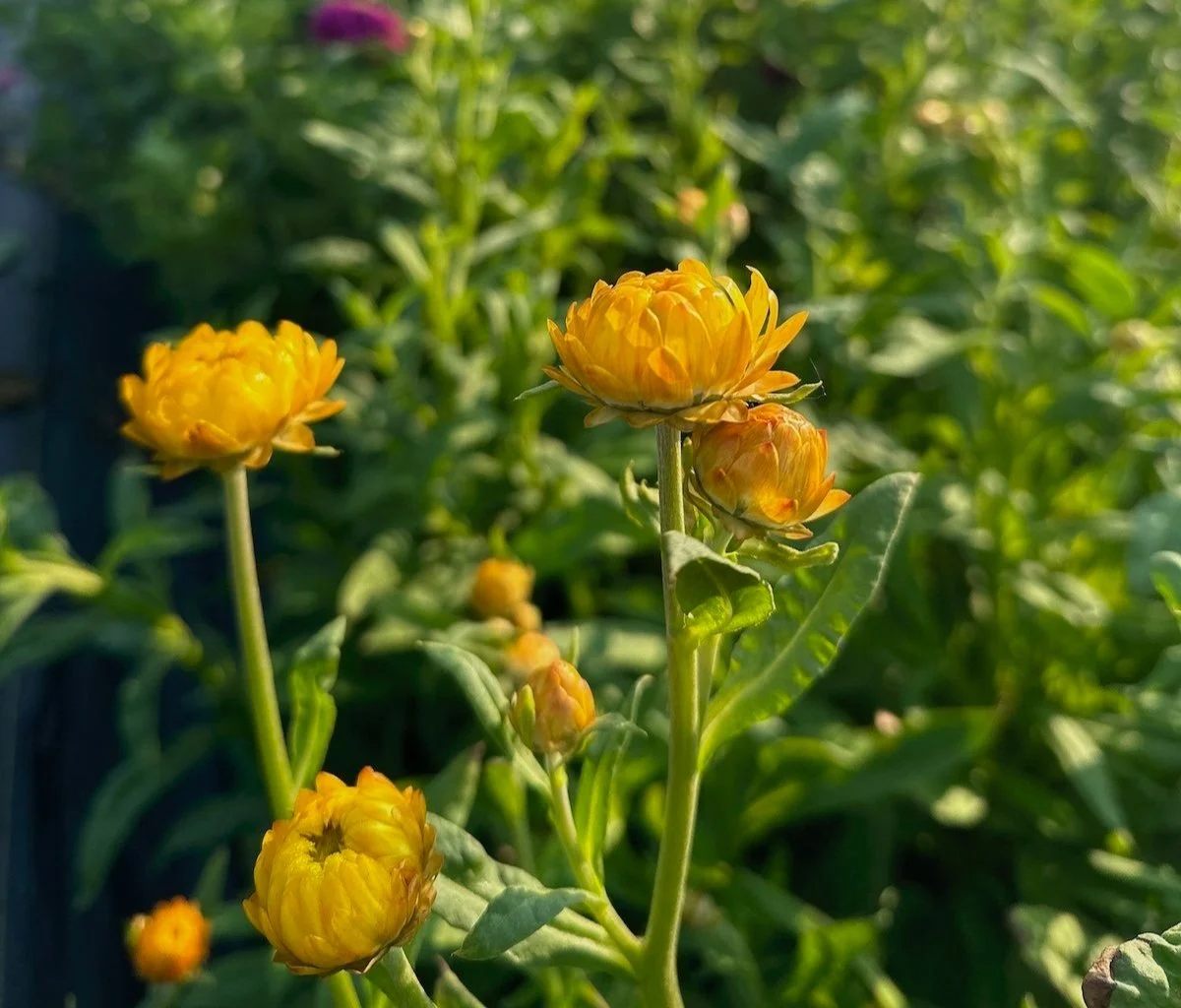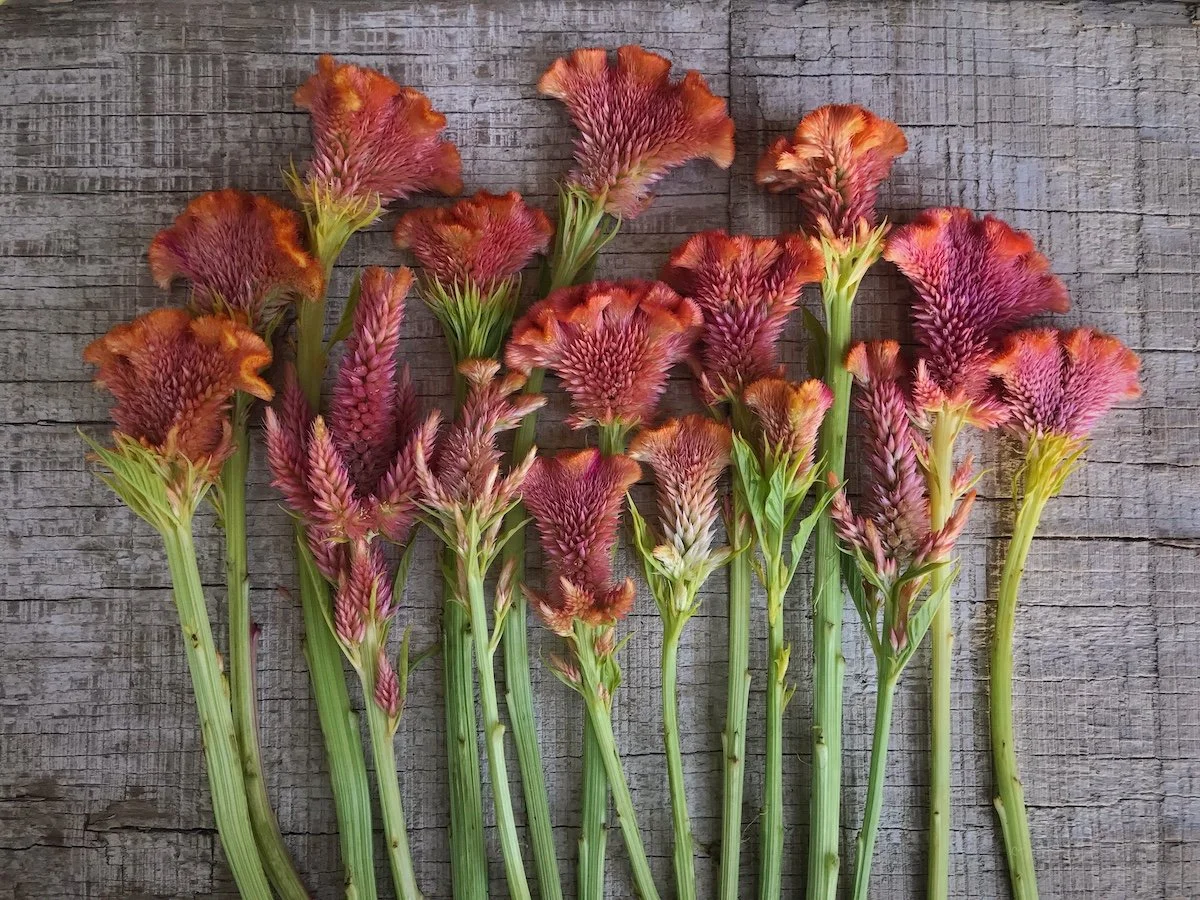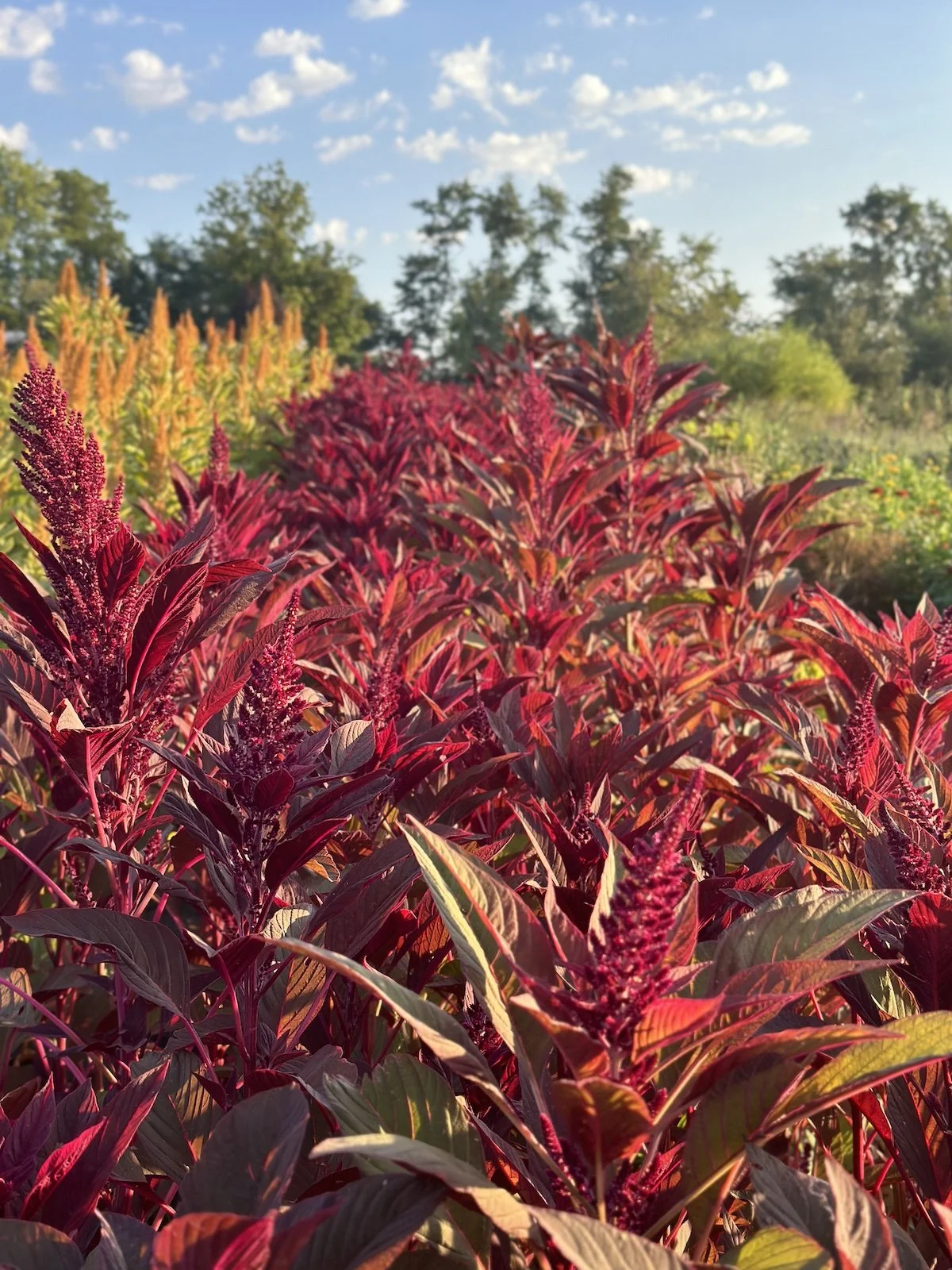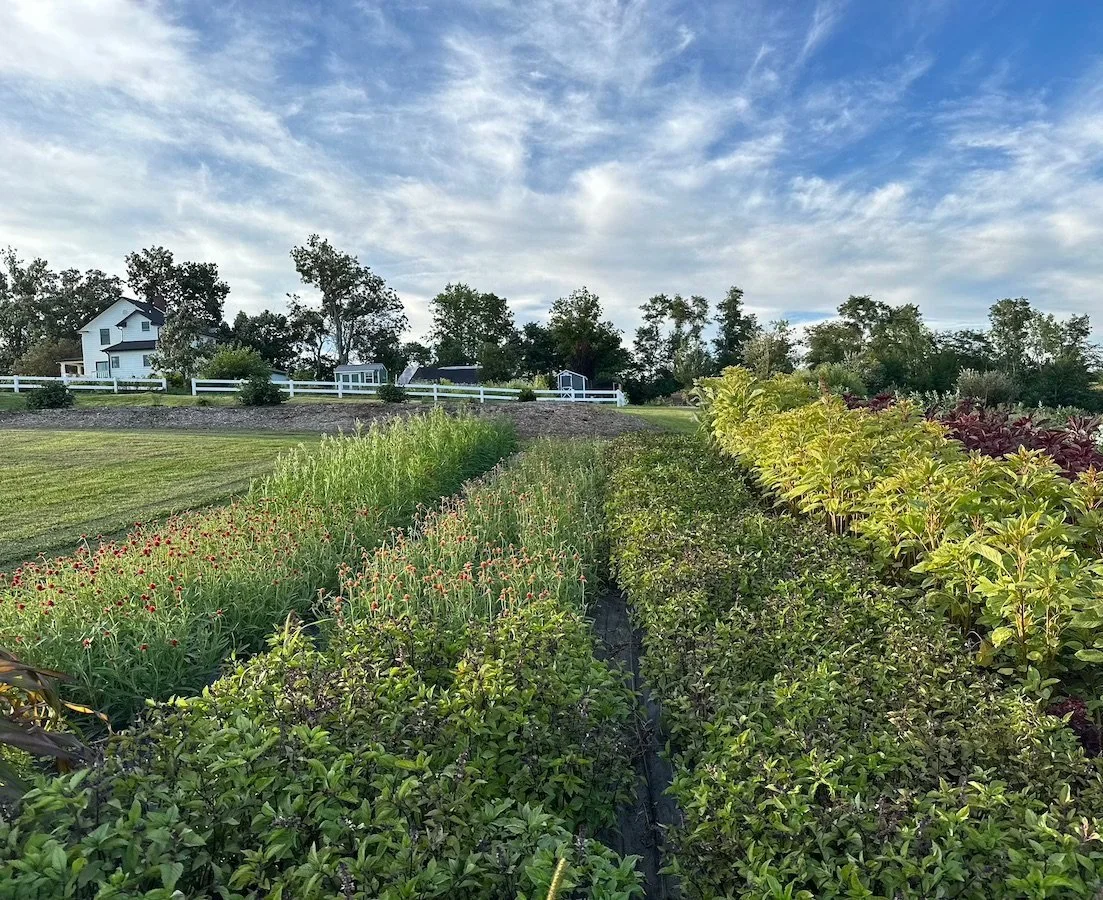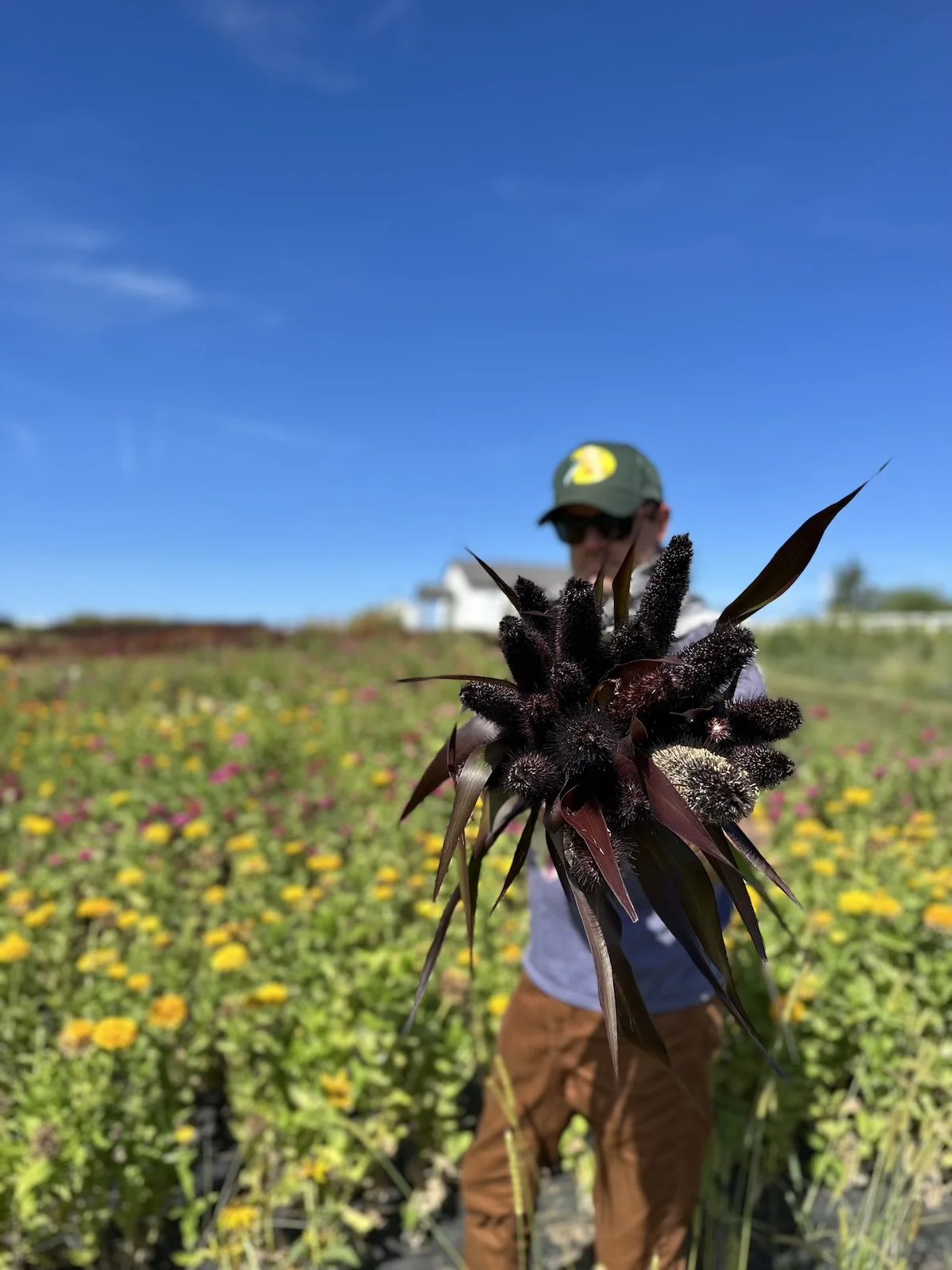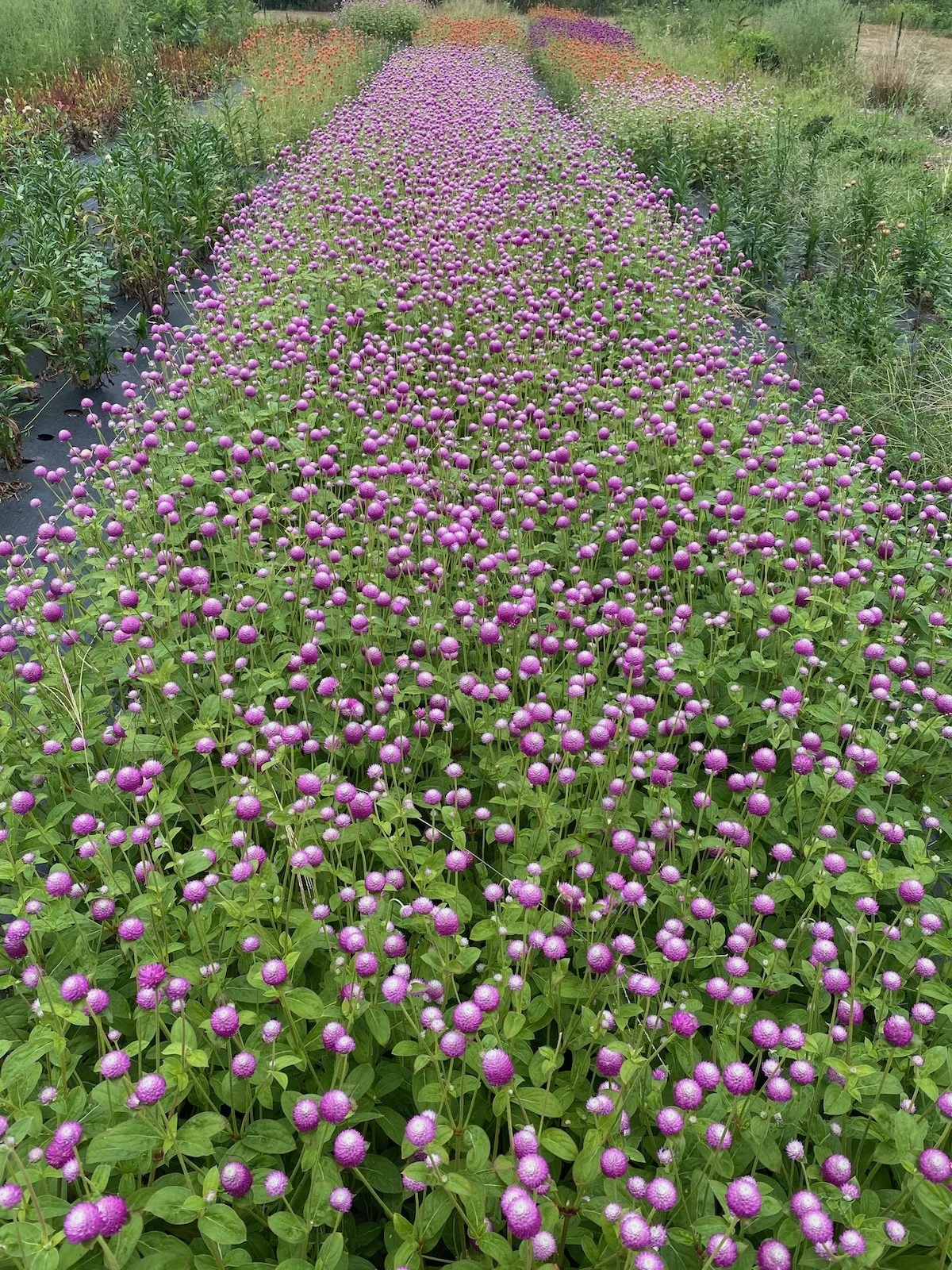Planning Ahead
Fall Flowers We’re Planting Now
Believe it or not, now is the time to start thinking about your fall garden! Some of the most striking, textural flowers for late-season bouquets need to be started in early summer so they’re ready to shine when the weather begins to cool.
The secret to stunning fall blooms all comes down to succession planting. Succession planting means planting more than once a year to ensure that we have blooms year round, in different colors, textures, and varieties. If you want to learn more about our favorite fall colors and tips for planting in warm weather, check out our past blog on late summer planting.
Here’s a look at what we’re planting in late June and early July this year, that will be sure to put on a stunning fall show!
Strawflower
These blooms are a fall favorite for a reason. Their unique texture adds a fun pop to arrangements, and they come in beautiful autumn shades like bronze, rush, gold, and blush. They’re one of the best flowers for drying and perfect for wreaths and winter decor. Strawflowers love the heat, so starting them now means strong, healthy plants just in time for cooler days.
We love Strawflowers (Helichrysum bracteatum) for their unique charm and versatility. One standout is our Golden Glow variety, beloved for its striking presence in fresh bouquets, whimsical flower crowns, and long-lasting appearance in dried arrangements, with heights ranging from 12″ to 36″.
These blooms are effortless to grow: start indoors 4–6 weeks before the last frost or sow directly outdoors in late spring. The seeds are tiny and require light to germinate, so keep them just barely covered with vermiculite at about 70 °F, misting gently. Expect sprouting in 7–10 days, and once seedlings sport four leaves, harden off and transplant them into full sun.
Celosia
Celosia is a staple in any fall bouquet because it’s full of texture. Whether it’s the ruffled crested version or the soft, feathery plumes, these blooms add bold shapes and rich colors to fall arrangements. Like Strawflower, Celosia also comes in beautiful colors such as gold, magenta, orange, hot pink, rose, and burgundy.
Amaranth
With its volume and bold colors, Amaranth is a favorite for fall wreaths, centerpiece arrangements, and it looks stunning mixed with grasses and dahlias. This plant grows tall and fast, so make sure you give it room to stretch out and support taller varieties to prevent flopping in the rain and wind.
Cinnamon Basil
Cinnamon Basil has both sweet and spicy scented foliage and tall stems with purple blooms. It’s not only beautiful but also adds a sensory element to bouquets or straight bundles. It’s sure to elevate your flower arrangements and because it has both floral and culinary uses, it will leave your kitchen smelling amazing.
Zinnias
No flower patch is complete without Zinnias. We’ve highlighted them over and over, especially in our recent post about June’s blooms, but planting now means a fresh flush of color just as everything else starts to fade. Better yet, they come in just about every color you can imagine!
Colors we’re planting now are: red, orange, and yellow. All perfect colors for fall bouquets!
Ornamental Grasses
Ornamental Grasses are the perfect addition to a fall flower garden because not only do they add vertical lines and subtle movement to your landscape, but many varieties have plumes that come in shades of bronze, cream, and blush that pair perfectly with autumn blooms. Their versatility in bouquets and wreaths, textural interest in dried arrangements, and long-lasting presence make them a must-grow.
For ornamental grasses, planting now (July), means their roots have time to take hold in warm soil before the winter, and many of them will hold their form through the winter, continuing to provide a habitat for wildlife.
Gomphrena
Gomphrena is a vibrant and drought-tolerant annual with blooms that come in a beautiful palette of magenta, pink, white, and orange. These flowers hold color so well when dried, which makes them a favorite for both fresh and dried bouquets and arrangements.
While traditionally direct-seeded or transplanted in late spring, Gomphrena can be succession-planted through early fall in zones with a long growing season. If you’re in a warmer zone or using high tunnels, now’s the time to tuck in a final flush for fall harvesting or drying.
If you want to see our fall blooms in action, check out our fall classes and events and make it a point to come see them for yourself!
Why Planting Now Matters
It may seem too late in the season to plant, but it’s the perfect time! Waiting until the end of summer is often too late as many of the most stunning blooms need at least 80–100 days to reach full maturity. That’s why late June and early July are prime planting time for our zone (5b).
Here’s why it pays to plan ahead:
Timing the Bloom: Most fall flowers take months to develop strong stems and autumnal colored blooms. Starting now ensures they peak just as your summer flowers begin to fade.
Beat the Frost: Starting early gives your plants enough time to grow, bloom, and be harvested before the first frost hits.
Extended Harvest Season: A well-planned planting schedule means your garden keeps producing long after others have packed it in for the year.
While it’s not possible to plan ahead for everything, it makes a huge difference when we can. When it comes to planting, we know that the seeds we sow now will shape the beauty we (and y’all) get to enjoy later.
Happy planting!
XX Jenn and Adam

